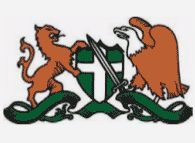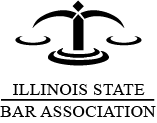Can I Sue My Doctor for a Birth Injury in Illinois?
Posted on May 08, 2025
Can I Sue if I Lost My Spouse Due to Undiagnosed Breast Cancer?
Posted on April 25, 2025
Can You Sue When Lasik Surgery Goes Wrong?
Posted on March 13, 2025
Anesthesia Errors – Including Being Aware During Surgery
Posted on January 15, 2025
Can a Failure to Diagnose Cancer Potentially Be Deadly?
Posted on December 31, 2024
What Are the Most Common Causes of Medical Malpractice?
Posted on December 03, 2024
Do More Holiday Hospitalizations Result in Medical Malpractice?
Posted on November 26, 2024
$10.2 Million Verdict for Illinois Negligent Amputation
Posted on November 19, 2024
Hoffman Estates Stroke Victim Awarded $40 Million in Medical Malpractice Suit
Posted on October 31, 2024
Could a Failure to Diagnose Breast Cancer Alter Your Future?
Posted on October 08, 2024
Can I Sue If My Surgeon Left Gauze Inside My Body? | IL
Posted on August 29, 2024
How Does a Cancer Misdiagnosis Occur?
Posted on July 30, 2024
My Operation Left Me Disabled - Can I Sue?
Posted on July 22, 2024
How Long Do I Have to File an Illinois Birth Injury Claim?
Posted on June 17, 2024
What Are the Consequences of an Anesthesia Error?
Posted on June 10, 2024
Can I Pursue a Lawsuit After a Delayed Diagnosis?
Posted on April 22, 2024
What Is an Illinois Medical Malpractice Claim?
Posted on March 19, 2024
What Do I Do if I Suspect a Birth Injury?
Posted on February 14, 2024
Can I Receive Compensation After an Anesthesia Error?
Posted on January 29, 2024
Common Birth Injuries for Infants
Posted on January 05, 2024
Birth Injuries from Pitocin
Posted on November 22, 2023
Birth Injuries from Failure to Order a C-Section
Posted on October 16, 2023
October Is Breast Cancer Awareness Month
Posted on October 05, 2023
Did You Receive a Breast Cancer Misdiagnosis?
Posted on September 20, 2023
What is Gynecology Malpractice?
Posted on September 15, 2023
Understanding Medical Negligence in Reproductive Law
Posted on August 21, 2023
My Doctor Operated on the Wrong Leg. Do I Have a Medical Malpractice Claim?
Posted on July 13, 2023
Is Failing to Diagnose Common in the Realm of Medical Malpractice?
Posted on July 10, 2023
What is Most Important to Know About Medical Malpractice and Birth Injuries?
Posted on June 14, 2023
Why Do Anesthesia Errors Occur?
Posted on June 07, 2023
Dental Malpractice in Illinois: When Dental Professionals Fail Their Patients
Posted on April 14, 2023
Birth Injuries and Medical Negligence
Posted on April 04, 2023
Filing a Medical Malpractice Claim in Illinois: What You Need to Know
Posted on March 30, 2023
Cerebral Palsy and Birth Injuries: Understanding Your Legal Rights in Illinois
Posted on March 21, 2023
Understanding Negligence in Medical Malpractice Lawsuits in Illinois
Posted on February 19, 2023
What You Should Know About Medical Misdiagnosis in Illinois
Posted on January 15, 2023
Recovering Damages for Surgical Errors
Posted on December 22, 2022
Understanding Your Rights After a Medical Malpractice Incident
Posted on December 19, 2022
Medical Malpractice Claims for Anesthesia Errors in Chicago, Illinois
Posted on November 22, 2022
October is Breast Cancer Awareness Month: Know Your Rights after a Failure to Diagnose
Posted on October 18, 2022
Can I Sue for a Hospital Acquired Infection?
Posted on October 13, 2022
Why Do Radiologists Miss Signs of Breast Cancer?
Posted on September 27, 2022
Was Your Child’s Birth Injury Caused by Pitocin?
Posted on September 23, 2022
Is a Doctor Legally Responsible for Failure to Diagnose Breast Cancer?
Posted on September 08, 2022
When Does Substandard Medical Care Cross the Line into Medical Malpractice?
Posted on August 23, 2022
Compensation for Victims of Malpractice in Fertility Cases
Posted on July 19, 2022
Failure to Diagnose Cancer and the Medical Standard of Care
Posted on April 22, 2022
Infant Asphyxia During Labor and Delivery Can Lead to Life-Long Complication or Death
Posted on April 15, 2022
Emerging Treatments for Breast Cancer Patients in Illinois
Posted on February 25, 2022
Causes and Early Signs of Breast Cancer
Posted on February 18, 2022
What Does My Ki-67 Level Say About My Breast Cancer Diagnosis?
Posted on February 11, 2022
Digital Breast Tomosynthesis Offers Improved Breast Cancer Patient Outcomes in Illinois
Posted on February 04, 2022
How Can a Hormone Receptor Test Affect My Breast Cancer Diagnosis?
Posted on January 28, 2022
What Is a HER2 Positive Breast Cancer Diagnosis?
Posted on January 24, 2022
Which Risk Factors Heighten the Likelihood of a Person Developing Breast Cancer?
Posted on January 17, 2022
What is the Difference Between Screening and Diagnostic Mammograms?
Posted on January 10, 2022
What Can I Do If a Doctor Misdiagnosed My Breast Cancer Type?
Posted on December 30, 2021
How Can an MRI Supplement a Screening Mammogram?
Posted on December 23, 2021
Why is a Stereotactic Biopsy Used for Ruling Out Breast Cancer?
Posted on December 13, 2021
Poor Fertility Treatment Practices Can Cause Tragedies in Illinois
Posted on December 03, 2021
What Causes Maternal Mortality in Illinois?
Posted on November 24, 2021
Can I Sue My Provider for Medical Complications Caused During an Abortion?
Posted on November 23, 2021
Can Midwives Be Guilty of Medical Malpractice in Illinois?
Posted on November 16, 2021
When Can I Sue for Medical Malpractice if My Baby Was Stillborn?
Posted on November 08, 2021
Is Breast Cancer Misdiagnosis Medical Malpractice?
Posted on October 27, 2021
What are Common Forms of Dental Malpractice in Illinois?
Posted on September 30, 2021
Can You Sue an Anesthesiologist for Medical Malpractice?
Posted on September 22, 2021
Improper Use of Pitocin Can Out Mothers and Babies at Risk
Posted on August 26, 2021
When Can a Patient Be Injured Because of Failure to Diagnose a Disease?
Posted on July 23, 2021
How Can Meconium Aspiration Syndrome Affect a Newborn Infant?
Posted on June 23, 2021
Surgical Errors May Involve Surgery at the Wrong Level of the Spine
Posted on May 07, 2021
How Can Testing Errors Lead to a Breast Cancer Misdiagnosis?
Posted on December 04, 2020
What Role Does Cooling Play in Infant Brain Injuries?
Posted on October 21, 2020
The Importance of Electronic Fetal Monitoring in Preventing Birth Injuries
Posted on September 18, 2020
How Often Do Injuries Occur Because of a Doctor’s Misdiagnosis?
Posted on January 10, 2020
Can I Pursue Compensation for Medical Malpractice at a VA Hospital?
Posted on February 21, 2019
Medical Negligence Involving Failure to Address Vascular Complications
Posted on January 31, 2019
Surgical Errors Are Alarmingly Common in the United States
Posted on November 30, 2018
Common Types of Birth Injuries Caused By Medical Malpractice
Posted on November 12, 2018
Breast Cancer Misdiagnosis Is a Major Risk for American Women
Posted on October 19, 2018





 312-236-6324
312-236-6324




 312-236-6324
312-236-6324 312-236-6426
312-236-6426


